STOKE ST MARY, SOMERSET, ENGLAND


STOKE ST MARY HISTORICAL RECORDS
DOMESDAY BOOK
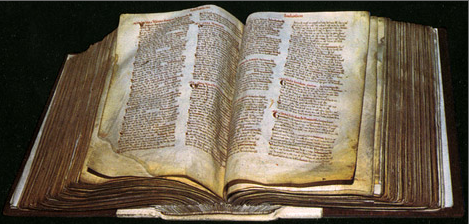
In 1066 Duke William of Normandy conquered England. The Domesday book was compiled 20 years later. The Saxon Chronicle records that in 1085 “at Gloucester … the King had deep speech with his counsellors … sent men all over England to each shire .. To find out … what or how much each landholder held.”
The Domesday Book is now held in the National Archives at Kew.
For the South Western Counties there is another set of returns -
It is a composite land and tax register associated with the Domesday Survey of 1086, covering much of South West England. It contains a variety of administrative materials concerning the counties of Cornwall, Devon, Dorset, Somerset and Wiltshire.
The sole surviving copy is MS 3500 in Exeter Cathedral Library. http://www.exondomesday.ac.uk/
The Liber Exoniensis would list livestock whereas the Domesday Book generally did not.
When all the information had been collected, the commissioners visited special sittings of the county courts to test the accuracy of the information provided. Jurors (half of them English, the other half French) were summoned from all the hundreds or wapentakes to verify the accuracy of the information under oath. The evidence would have been based on existing geld records and church payment lists. Some of the information provided would have been oral testimony.
1. What is the manor called?
2. Who held it in the time of King Edward (in 1066)?
3. Who holds it now (in 1086)?
4. How many hides are there (what is its tax assessment)?
5. How many plough(team)s on the demesne (local lord’s own land) and among the men (rest of the village)?
6. How many free men, sokemen, villans, cotta[ge]rs, slaves?
7. How much woodland, meadow, pasture, mills, fisheries?
8. How much has been added to or taken away from the manor?
9. How much was the whole worth (1066) and how much now (1086)?
10. How much had or has each freeman and each sokeman?
All the above questions to be recorded three times: in the time of King Edward (1066), when William gave it (often 1066), and now (1086)
11. And whether more can be had than is had (in other words, can the manor raise more tax revenue)?
Stoke St Mary -
Firstly, as part of the Taunton Deane Hundred, it appears as land held by the Bishop of Winchester.
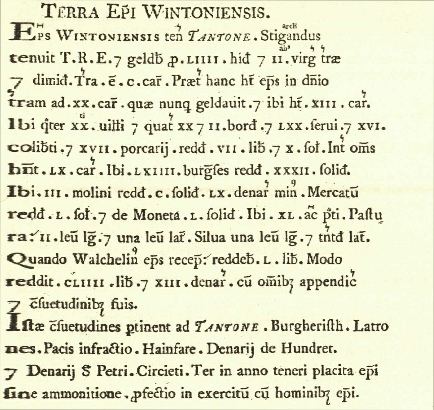
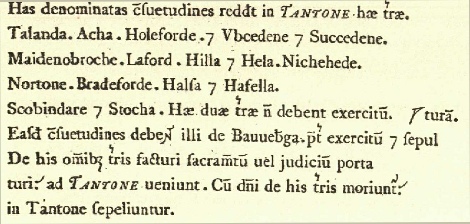
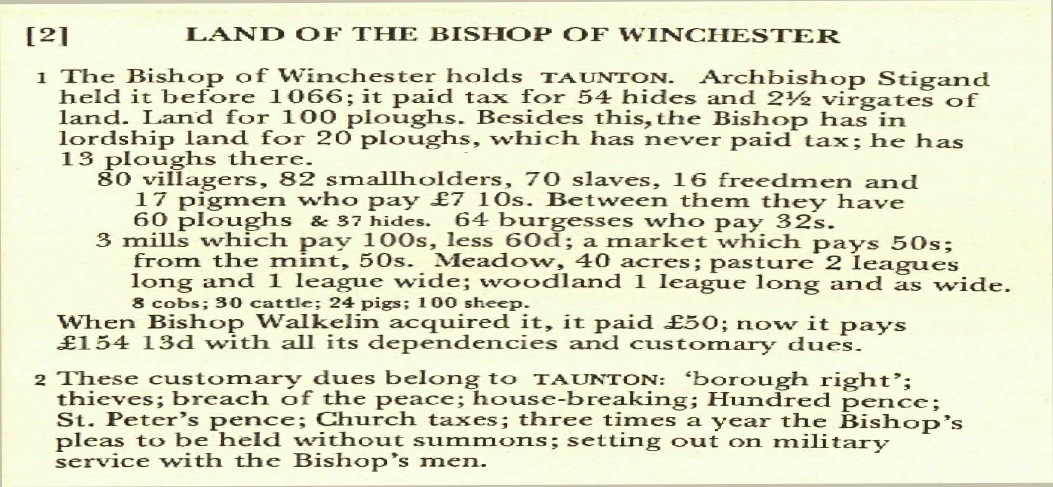

Stoke [Saint Mary] also appears as land held by William de Moyon, feudal baron of Dunster and Sheriff of Somerset. And perhaps this is why Stoke did not owe military service to the Bishop of Winchester
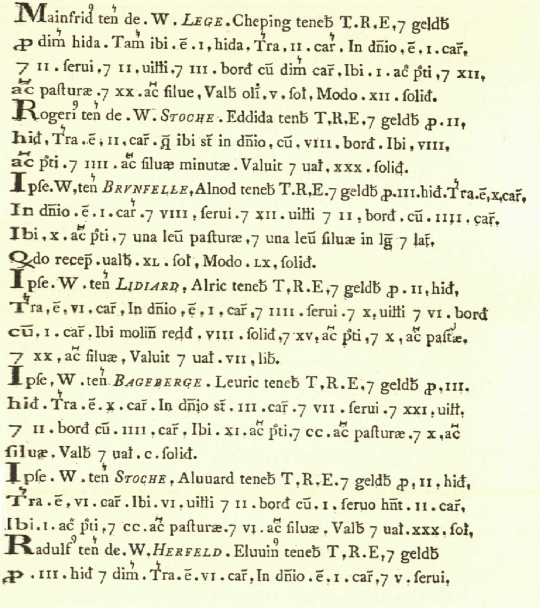


Entry for Stoke in the Liber Exoniensis [1816 Ellis edition]
-
The Exon copy does not mention livestock -
Only Head of houses were counted so there were possibly only a maximum of 8 houses in the village with perhaps a small barn or two, possibly somewhere in the area of the ancient field strips near Higher Broughton Farm?
Hide hida Measurement of land for tax assessment used outside Danelaw counties (where carucates were used). Approximately 120 acres, depending on local variations in the acre.
Virgate virgata, virga A quarter of a hide ie 30 acres. Used in Domesday for tax purposes.
Plough caruca, carruca In Domesday the word implies a plough team with its eight oxen and the plough itself. The measure of a carucate was originally the amount of land which such a team could plough in one day.
Villager villanus Member of the peasant class with most land.
Smallholder bordariums Middle class of peasant, usually with more land than a cottager but less than a villager.
Pasture was land where animals grazed all year round. Meadow which was much more valuable, was land bordering streams and rivers, which was used both to produce hay and for grazing. Pasture was entered in Domesday less regularly than meadow and was measured in several different ways.
The arable land was used to grow wheat, barley, oats and beans.
The system of landholding as portrayed throughout the Domesday Book was based on a rigid social hierarchy called the feudal system,
Rather than being owned, as is the case nowadays, land was held from a member of society higher up the social tree. At the top sat King William who granted land to tenants-
“We know that the lords of Dunster some time after 1086 relinquished some of their manors. ‘Exford, Alcombe, and parts of Brewham and Lydeard ceased to have any feudal connection with Dunster when given outright to religious houses to hold in free alms. Also we may eliminate Stoke St Mary, Nunney. Spettisbury, Poleham. Winterborne and Clayhanger, belonging to William de Moyon in 1086, but soon after surrendered or exchanged “
Notes and Queries Vol 37, page 187


| Census |
| BMD |
| Maps |
| Tithes |
| Lists |
| Marriage |
| Marriage-other parish |
| Baptism |
| Burials |
| Marriages - BT |
| Baptism - BT |
| Burials - BT |
| Monumental Inscriptions |
| 1600 - 1813 |
| 1813 - 1837 |
| 1837 - 1902 |
| 1677 - 1699 |
| 1700 - 1812 |
| 1813 - 1850 |
| 1850 - 1902 |
| 1677 - 1720 |
| 1721 - 1813 |
| 1813 - 1847 |
| 1847 - 1913 |
| Names on Graves |
| List of Graves |
| Old Houses |
| 1903 map |
| 1953 map |
| 2013 photo |
| 1980 photo |
| 1980 map |
| Village and Stoke Castle |
| Village South |
| 1837 Tithe map |
| 1898 map |
| 1809 map |
| Tithe-Houses |
| Tithe-Fields |
| 800-1499 |
| 16th/17th C |
| 18th C |
| 19th C |
| Churchmen |
| The Law |
| Celebrations |
| Anglo Saxon Chrtr |
| Domesday |
| Tithing |
| Pipe roll |
| Muster |
| Protestation |
| Probate & Wills |
| Taunton Siege |
| Tax 1603 |
| Tax 1641 |
| Tax 1690 |
| Thomas Patton |
| Walsh |
| Lock |
| Lance |
| Shaw |
| Farrant |
| Patton |
| The Village |
| E Rack |
| J Collinson |
| E Jeboult |